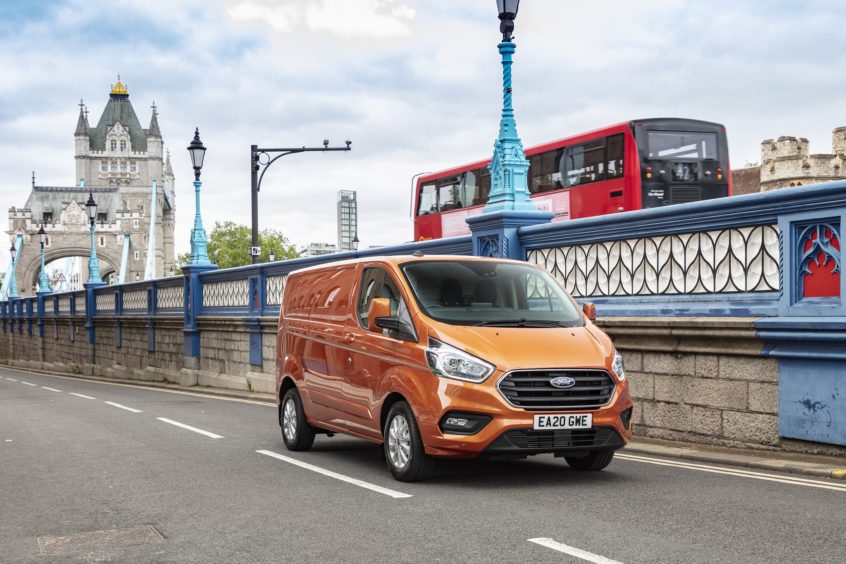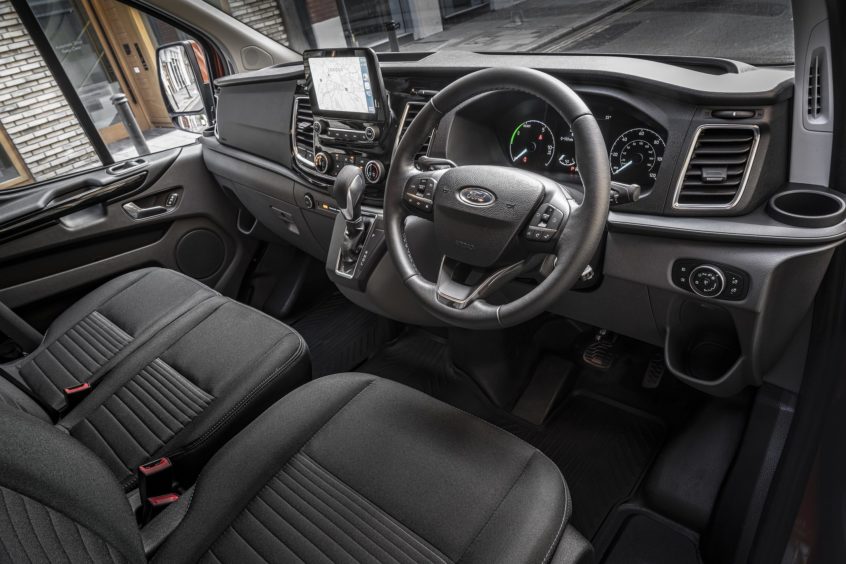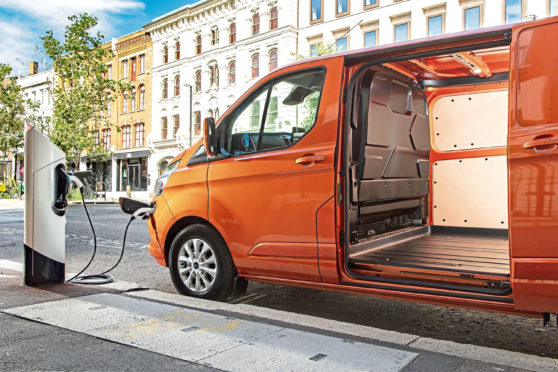For decades the Ford Transit has ruled supreme in the van sector.
Coming in a range of sizes to suit all needs, competively priced, cheap to fix and easy to drive, it’s used by tradespeople up and down the country.
The times they are a changin’, Mr Dylan once sang and Ford is a company that knows what’s blowing in the wind.
So here was have an electrified version of the Transit, which does away with dirty diesel in favour of zero emissions driving.
The plug-in hybrid Transit PHEV combines a 1.0 litre, three-cylinder petrol engine with an electric motor and battery.
Cleverly, the batteries are hidden under the floor so there is the same loadspace as in any other Transit van.
The battery can be charged in around 4.5 hours using a standard household socket or in two hours from a public fast charger.
When fully charged Ford claims it has an electric only range of around 35 miles. I found driving it on a dark, damp Scottish evening with windscreen wipers, lights and heater all on puts a bit of a dent in the official range.
After two and a bit hours of charging at my home in Dundee the onboard computer said the battery was 55% charged. That was enough to drive me to St Andrews on electric power alone, but I had to use the petrol engine on the way back.

Had I fully charged the battery it would have got me most of the way home, and if I had plugged into one of St Andrews’ public chargers when I was there I would have got all the way home with some battery capacity to spare. Like many things in life, it’s all about how you use it. Official fuel economy is 91mpg but again that’s dependant on using the electric power wisely.
Prices start at around £39,000, making it pricier than the diesel, but a government grant is available and if you’re diligent about charging it up you’ll make back some of the costs in fuel savings.

While the Transit PHEV has the same load space as a traditionally powered model and can carry up to 1,130kg it isn’t rated for towing so if you need to drag a trailer a diesel model remains the best choice.
The same goes if you regularly cover large motorway miles. But if you’re a tradesman who mainly does city jobs and is happy to plug in at the end of a day the Transit PHEV is a smart choice.
